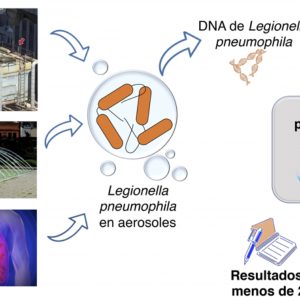Brief description of the solution and the added value it delivers
Disruptive technology with a simple end product: cereal SEEDS capable of producing harvests without any need for nitrogen fertilisation. NFIX technology forms the basis for producing cereals capable of receiving nourishment from atmospheric nitrogen. Its application would improve global food security and protect the environment from the adverse effects resulting from excessive use of synthetic nitrogen fertilisers. The enzyme nitrogenase, which converts inert molecular nitrogen into biologically active nitrogen, is only found in certain bacteria and is extremely sensitive to oxygen. The invention describes a biotechnological method for making highly oxygen-sensitive proteins, such as nitrogenase, functional in eukaryotic cells (fungi, plants and animals).
Description of the technological basis
Production of active nitrogenase in eukaryotic cells. NFIX is key to the bioengineering of nitrogen-fixing cereals. NFIX uses the mitochondrion as a key organelle for storing nitrogenase, since this is where cellular respiration takes place and oxygen levels are very low. The expression of nitrogenase in the mitochondrial matrix overcomes the main difficulty in producing nitrogen-fixing cereals: the presence of molecular oxygen derived from photosynthesis. The end product of NFIX will be cereal seeds that contain nitrogenase genes and yield productive harvests without any need for nitrogen fertilisation.
‘NFIX technology forms the basis for producing cereals capable of receiving nourishment from atmospheric nitrogen’
Business needs / application
-
It is necessary to comply with ever more restrictive regulations and have less impact on the environment.
-
The production of chemical nitrogen fertilisers using the Haber-Bosch process (150 T/year), which is necessary for highly productive agriculture, causes environmental problems on account of the fact that 50% of those fertilisers are never used by the crops and contaminate the soil, surface water and groundwater.
-
Expenditure on synthetic fertiliser production is $100 billion per year (approximately 50% of agricultural costs).
-
Haber-Bosch requires enormous amounts of energy and hydrogen, consuming 5% of the world’s annual natural gas production.
-
There is a need to improve the productivity of harvests in economically disadvantaged countries that do not have the resources to fertilise their crops (Africa and Asia).
Competitive advantages
-
Improved crop productivity without the use of costly and environmentally harmful chemical nitrogen fertilisers.
-
Reduced greenhouse effect.
-
Reduced water eutrophication.
-
High productivity with reproducible results.
-
Straightforward, disruptive technology with a simple end product: seeds containing nitrogen-fixing machinery, as opposed to the complexity involved in biologically co-fertilising fields to modify their microbiota or the overuse of environmentally unfriendly chemical fertilisers.
-
Simple for the farmer to apply, which is becoming the norm in conventional agriculture.
‘Non-polluting, highly productive agriculture’
‘Disruptive technology that is easy to apply in the field’
References
-
Research group led by Professor Luis Rubio, CBGP (UPM-INIA).
-
Technology funded in the initial stages of its development by the Bill & Melinda Gates Foundation. NFIX project phase I (USD 3,127,000).
-
BNF Cereals project phase II (USD 5,000,000).
-
López-Torrejón et al. 2016. Nat Commun. 7:11426. DOI: 10.1038/ncomms11426.
Industrial protection
European patent granted through the EPO: EP14761658.5.
Stage of development
-
Concept
-
Research
-
Lab prototype
-
Industrial prototype
-
Production
Contact
NFIX contact
Luis M. Rubio, Gema López-Torrejón, José M. Buesa
e: ; e: ; e:
UPM contact
Innovation and Entrepreneurship Programmes
Technological Innovation Support Centre (CAIT) – UPM
e:


















